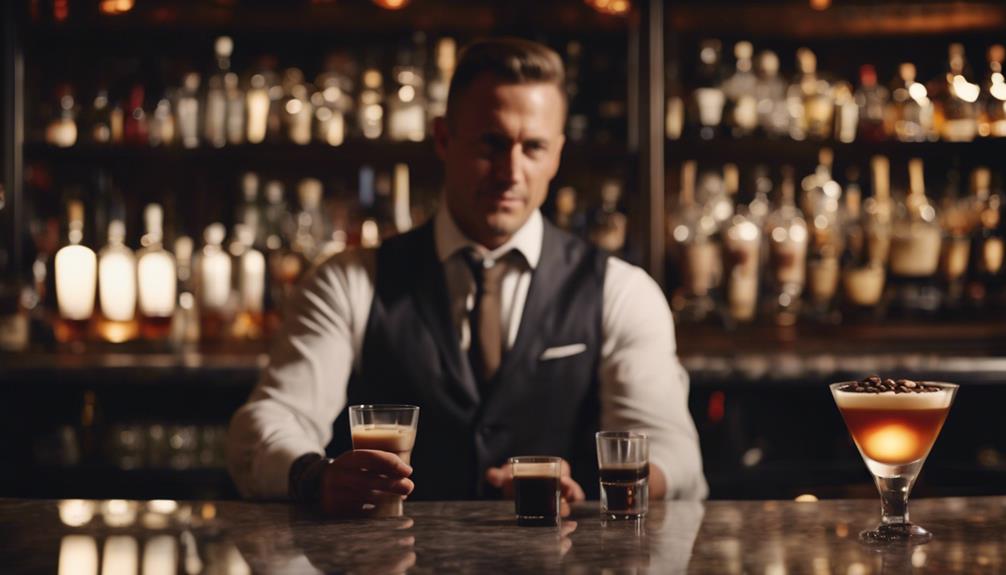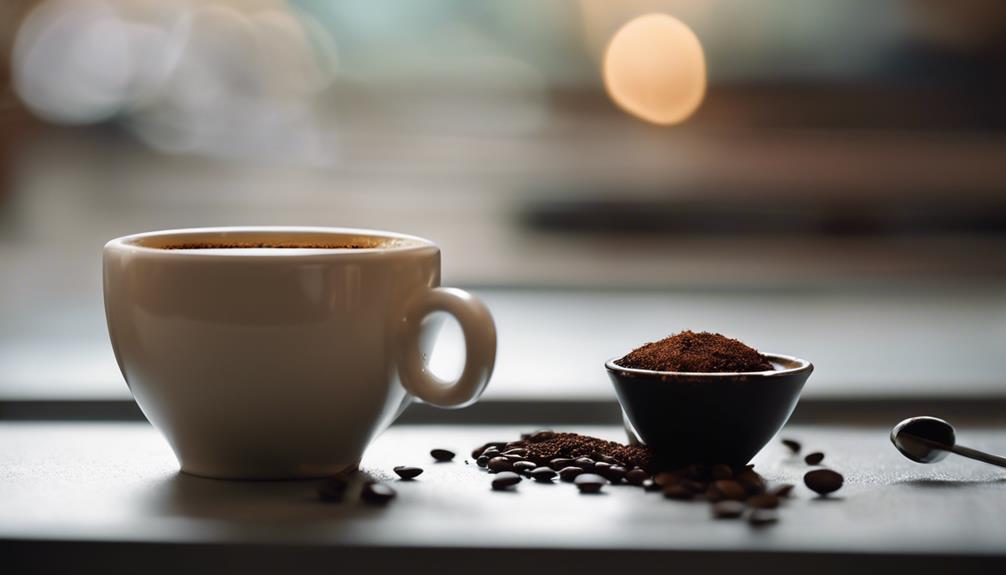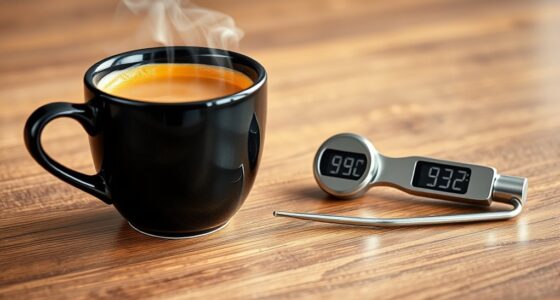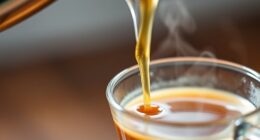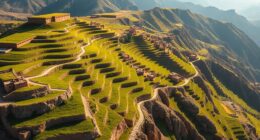You are in search of a set of espresso cups that is both stylish and functional. You have landed in the right place! Espresso cups come in various sizes, ranging from 2 to 4 ounces, and are made of materials such as ceramic, porcelain, and double-walled glass, each with its own advantages. Well-known brands offer unique designs, from rustic to minimalistic, that appeal to your individual taste. When selecting the ideal set, take into account factors such as heat retention, durability, and ergonomic design. By recognizing the qualities of a great espresso cup, you will be enjoying the perfect cup in no time – and there is more to explore.
Key Takeaways
- Look for espresso cups with tapered shapes and rounded interiors to enhance crema formation and aroma release.
- Choose cups made from materials like ceramic, porcelain, or double-walled glass for excellent heat retention and durability.
- Select cups with ergonomic handles for a comfortable grip and aesthetic appeal.
- Consider cups with saucers to prevent mess and add functionality to your coffee ritual.
Espresso Cup Varieties and Sizes
When it comes to enjoying your perfect shot of espresso, the variety and size of the cup you use can make all the difference.
You'll find that espresso cup varieties range in size from 2 to 4 ounces, accommodating both single and double shots of espresso. If you're a fan of double espresso, you'll appreciate larger cups that can hold up to 4 ounces. These cups are specifically designed to enhance the drinking experience by preserving aroma and flavor.
Demitasse cups, for instance, are designed to optimize heat retention, ensuring your espresso stays hot for a longer period. Standard espresso cup sizes, typically around 2 to 3 ounces, are ideal for intense espresso shots. However, larger cups can dilute the espresso's intensity, so it's crucial to choose the right size for your preferred brew.
With specialty cups available for variations like macchiatos or double shots, you can elevate your espresso experience. By selecting the perfect cup size and variety, you'll be able to savor every sip of your espresso to the fullest.
Popular Espresso Cup Brands and Materials
As you explore the world of espresso cups, you'll likely come across renowned brands like Iittala, HKliving, Broste Copenhagen, and Marimekko, each offering unique styles and materials that cater to your distinct taste and preferences.
These brands are known for their high-quality designs that not only elevate the coffee experience but also add a touch of elegance to your daily routine.
Some popular materials you'll come across include:
- Ceramic and porcelain, which provide excellent heat retention for the perfect espresso shot
- Double-walled glass, offering insulation and a sleek aesthetic appeal
- Stainless steel, durable and excellent for temperature maintenance
- Broste Copenhagen's Nordic Sea and Nordic Sand designs, which exude rustic charm and functionality
Considerations for Buying Espresso Cups
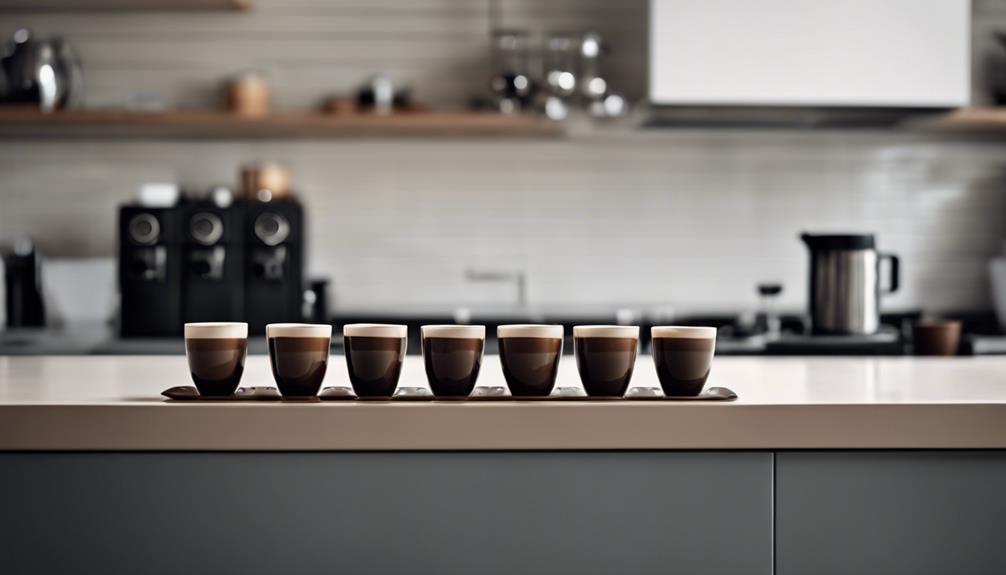
When buying an espresso cup set, you'll want to take into account a few key factors to guarantee you get the best experience.
You're looking for cups that can hold the right amount of espresso, are made of a material that retains heat well, and have a design that enhances the flavor and comfort of your drink.
Material Selection Matters
You'll want to contemplate the material of your espresso cups carefully, since it can make a substantial difference in your overall coffee experience. The right material selection can enhance the flavor, aroma, and overall enjoyment of your espresso.
Here are some key considerations to keep in mind when choosing the perfect material for your espresso cups:
Heat Retention: Ceramic and porcelain materials are known for their excellent heat retention properties, keeping your espresso warm for a longer period.
Durability: Opt for materials like stoneware or stainless steel for their durability and ease of maintenance.
Aesthetic Appeal: The design and material of the cup can substantially influence the overall coffee experience, enhancing both visual appeal and sipping enjoyment.
Thickness Matters: Thicker walls provide a better grip and reduce the risk of shattering, while also improving heat retention.
Temperature Control: Materials like double-walled glass can help maintain the ideal drinking temperature longer, enhancing the overall espresso drinking experience.
Espresso Size Importance
What's the ideal espresso cup size to release the full flavor and aroma of your shot? When it comes to espresso size importance, you'll want to evaluate a few key factors.
A standard demitasse cup, ranging from 2 to 4 ounces, is specifically designed to accommodate a single or double shot of espresso. This size guarantees the concentrated flavor of your shot isn't diluted.
Choosing a cup that can hold a double espresso (around 60 ml) can elevate your overall drinking experience. It's crucial to select the right size, as larger cups can water down the intensity and flavor of your espresso.
You'll also want to examine how the cup will work with your espresso machine. A cup that fits snugly under the machine's spout will help retain heat and prevent messes.
Remember, the shape and size of your cup impact not only the visual presentation but also the aroma and crema, ultimately enhancing your espresso experience.
Design Affects Experience
As you've honed in on the ideal cup size, it's time to contemplate how the design of your espresso cup affects the overall experience, from the way the crema forms to the temperature of your shot. The design of your espresso cup isn't just about aesthetics; it greatly impacts the flavor, aroma, and overall enjoyment of your espresso.
Here are some key design considerations to keep in mind:
- A tapered shape enhances crema formation and aroma release, making a huge difference in the taste of your espresso.
- Thicker cup walls provide better heat retention, keeping your espresso warm for longer while also giving you a comfortable grip.
- Look for materials like porcelain and double-walled glass that offer durability and insulation, ensuring the ideal temperature of your espresso.
- The size of the cup matters, with a capacity of around 60 ml being perfect for a double espresso.
When choosing your espresso cups, remember that design isn't just about looks; it's about creating an exceptional espresso experience. To enhance your espresso experience, consider the size and shape of the cup, as well as the material it is made of. A smaller, ceramic cup with a wider top can help to retain the aroma of the espresso, while a double-walled glass cup can keep the coffee hot for longer. Additionally, make sure to choose cups that are compatible with the best espresso pods for a seamless and flavorful brewing process.
Design Impact on Espresso Experience and Trends
With espresso cups, the design details make all the difference in elevating your coffee experience. The tapered shape of your espresso cups, for instance, enhances the swirling of the coffee, promoting better crema formation and aroma release before sipping.
Rounded interiors are designed to maximize the aromatic experience, allowing for a more enjoyable drinking process. Thicker cup walls help retain heat, ensuring that your espresso remains warm for a longer duration, which is essential for flavor enjoyment. You might opt for glass mugs, which also excel at retaining heat.
When it comes to aesthetic trends, you're likely influenced by styles like Scandinavian minimalism, driving demand for functional yet visually appealing espresso cups. Unique and customizable cup designs have become popular, allowing you to express your personal style while enjoying your espresso experience.
As you explore different designs, you'll find that the perfect blend of form and function can elevate your coffee ritual to new heights. By choosing an espresso cup that suits your taste, you're not just sipping coffee – you're savoring an experience.
Care, Maintenance, and Keeping Espresso Warm

You take pride in your espresso cups, so it's only natural to want to confirm they remain in top condition to continue elevating your coffee experience. Proper care and maintenance are vital to extend the lifespan of your cups and guarantee they always look their best.
Here are some essential tips to keep in mind:
- Hand wash delicate materials like glass and porcelain to prevent scratches and damage.
- Preheat your cups using hot water or a microwave to keep the espresso warm and enhance heat retention.
- Avoid using abrasive cleaners that can lead to scratches and diminish the aesthetic appeal of your cups.
- Regularly inspect your cups for cracks or chips to confirm safety and maintain the quality of your espresso experience.
Espresso Cup Features and Specifications
Two to four ounces of rich, velvety espresso is all that fits in a typical espresso cup, making them the perfect size for serving single or double shots.
When selecting an espresso cup, you'll want to take into account the material, as it directly impacts the overall experience. Porcelain and double-walled glass espresso cups are favored for their exceptional heat retention properties, ensuring your espresso stays warm for a longer period. Ceramic cups, on the other hand, offer durability and aesthetic appeal.
The thickness of the cup walls is also essential, as it affects heat retention, comfort during drinking, and the overall sensory experience. A tapered design is often preferred, as it enhances crema formation and aroma release, enriching your espresso drinking experience.
You'll also appreciate ergonomic handles, which provide a comfortable grip and make it easy to hold the cup. Plus, many espresso cups are designed to be stackable, making them convenient for storage in cafes or kitchens.
With these features in mind, you can find the perfect espresso cups that suit your style and needs.
Related Products for Espresso Enthusiasts
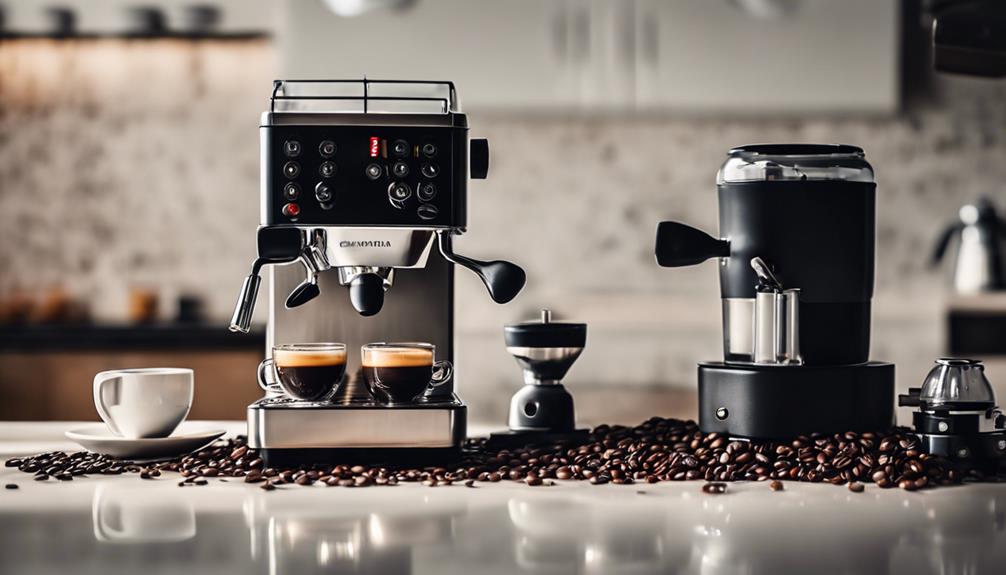
As an espresso enthusiast, you'll love discovering related products that elevate your coffee experience.
You're not just looking for a great espresso cup, but also complementary items that enhance your daily coffee ritual.
From stylish glass mugs to insulated cups, you're about to explore the perfect additions to your coffee connoisseur essentials.
Espresso Lovers' Delight
To elevate their daily ritual, espresso enthusiasts can explore a range of related products that not only enhance their coffee experience but also create a warm and inviting atmosphere. You can find unique and functional designs that complement your espresso cups set, taking your coffee game to the next level.
Here are some must-have products to contemplate:
- Mama Bear Iced Coffee Glass Cup ($15.00) for versatile beverage options
- Double-Walled Glass Espresso Cups ($20.00) for thermal insulation and rich color display
- 16oz Glass Coffee Mugs ($25.00) for larger servings and style
These products don't just enhance your espresso experience; they also create a cozy atmosphere that highlights specialty coffee enjoyment.
Coffee Connoisseur Essentials
You can take your espresso experience to the next level by exploring a curated selection of coffee connoisseur essentials that complement your espresso cups set.
For instance, consider adding a Mama Bear Iced Coffee Glass Cup to your collection, perfect for cold coffee beverages and priced at $15.00. If you're looking for a unique way to enjoy your espresso, double-walled glass espresso cups are a great choice, available for $20.00. These cups maintain the ideal temperature while showcasing the rich colors of your espresso through their transparent design.
To add functionality to your espresso setup, consider 16oz glass coffee mugs, available in a set of two for $25.00. Alternatively, you can opt for 10oz double-wall borosilicate glass coffee mugs, priced at $22.50, which offer excellent insulation for both hot and cold beverages.
When it comes to caring for your new coffee connoisseur essentials, remember to hand wash them to preserve their aesthetic appeal and prevent damage over time.
Expert Recommendations and Insights
Coffee connoisseurs agree that the perfect espresso cup is more than just a vessel; it's an essential component that elevates the entire espresso experience. As you commence on your espresso journey, you'll want to take into account the expert recommendations that'll take your coffee game to the next level.
Here are the expert insights you shouldn't ignore:
- Opt for espresso cups made from materials like porcelain and ceramic for ideal heat retention and durability.
- Choose cups that range from 2 to 4 ounces to enhance the aromatic experience while sipping.
- Look for design features like tapered shapes and rounded interiors that improve crema formation and aroma release.
- Prioritize ergonomics in cup design, as comfortable handles greatly enhance the overall user experience.
Types of Espresso Cups and Their Characteristics
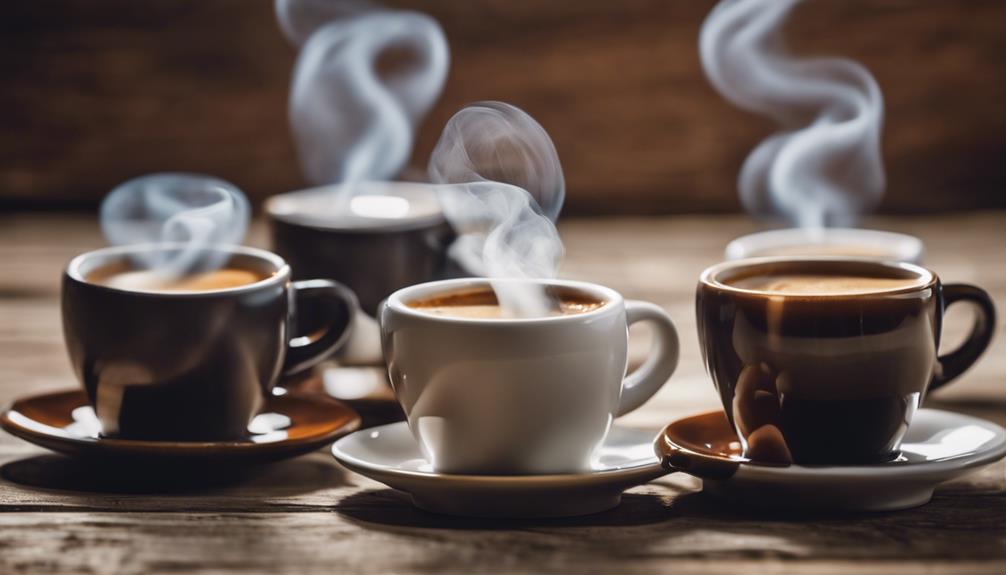
What's the perfect espresso cup for your morning routine – a sleek, modern double-walled glass cup or a classic, elegant porcelain vessel? When choosing the ideal espresso cups for your daily dose, you'll want to evaluate the characteristics that matter most to you.
Double-walled glass cups are a great option if you want to appreciate the visual appeal of your espresso while maintaining the perfect temperature. These cups offer a comfortable grip and a modern aesthetic that's sure to impress.
On the other hand, if you're looking for a more traditional approach, porcelain cups are the way to go. These classic espresso cups are industry standards, known for their elegant style and heat retention capabilities. They're perfect for serving espresso in a sophisticated setting.
Of course, there are other options to examine as well.
Espresso cups with saucers are designed to prevent mess and combine functionality with classic design. Stoneware espresso cups offer rustic charm and excellent heat retention, while stackable espresso cups are perfect for saving space in small kitchens or cafés.
Whichever type you choose, you're sure to find the perfect fit for your morning routine.
Frequently Asked Questions
Can Espresso Cups Be Used for Hot Chocolate or Tea as Well?
You wonder if your espresso cups can double as hot chocolate or tea cups. Absolutely, you can use them for that! They're perfect for small servings of hot beverages, and their insulation will keep your drinks warm.
Are Espresso Cups Usually Sold Individually or in Sets?
You're wondering if you'll be stuck buying one tiny cup at a time? Relax, you're in luck! Espresso cups are often sold in sets, so you can get a whole collection at once, perfect for sharing with friends or enjoying solo.
Can I Put Espresso Cups in the Dishwasher or Microwave?
You're wondering if you can toss your espresso cups in the dishwasher or microwave for easy cleaning. Generally, it's safe to put them in the dishwasher, but microwaving is a no-go to avoid damaging the cups.
Are There Any Specific Espresso Cups for Outdoor or Travel Use?
"When you're on the go, you need gear that can keep up. For outdoor or travel use, you'll want espresso cups made from durable, shatter-resistant materials like stainless steel or silicone that can withstand rough handling."
Do Espresso Cups Come With a Warranty or Guarantee?
You're probably wondering if your espresso cups come with a warranty or guarantee. Well, many brands offer some kind of protection, but it varies – some provide a lifetime guarantee, while others have a limited warranty or none at all.
Conclusion
You've explored the world of espresso cups, and now you're ready to elevate your coffee game.
From sleek designs to functional features, you've got the lowdown on what makes a great cup.
Whether you're a coffee connoisseur or a newbie, you know that the right cup can make all the difference.
So go ahead, indulge in your favorite brew, and savor the experience – you deserve it!


